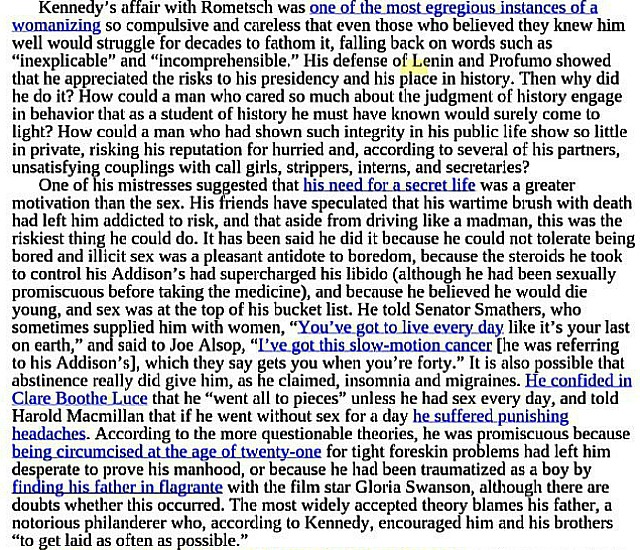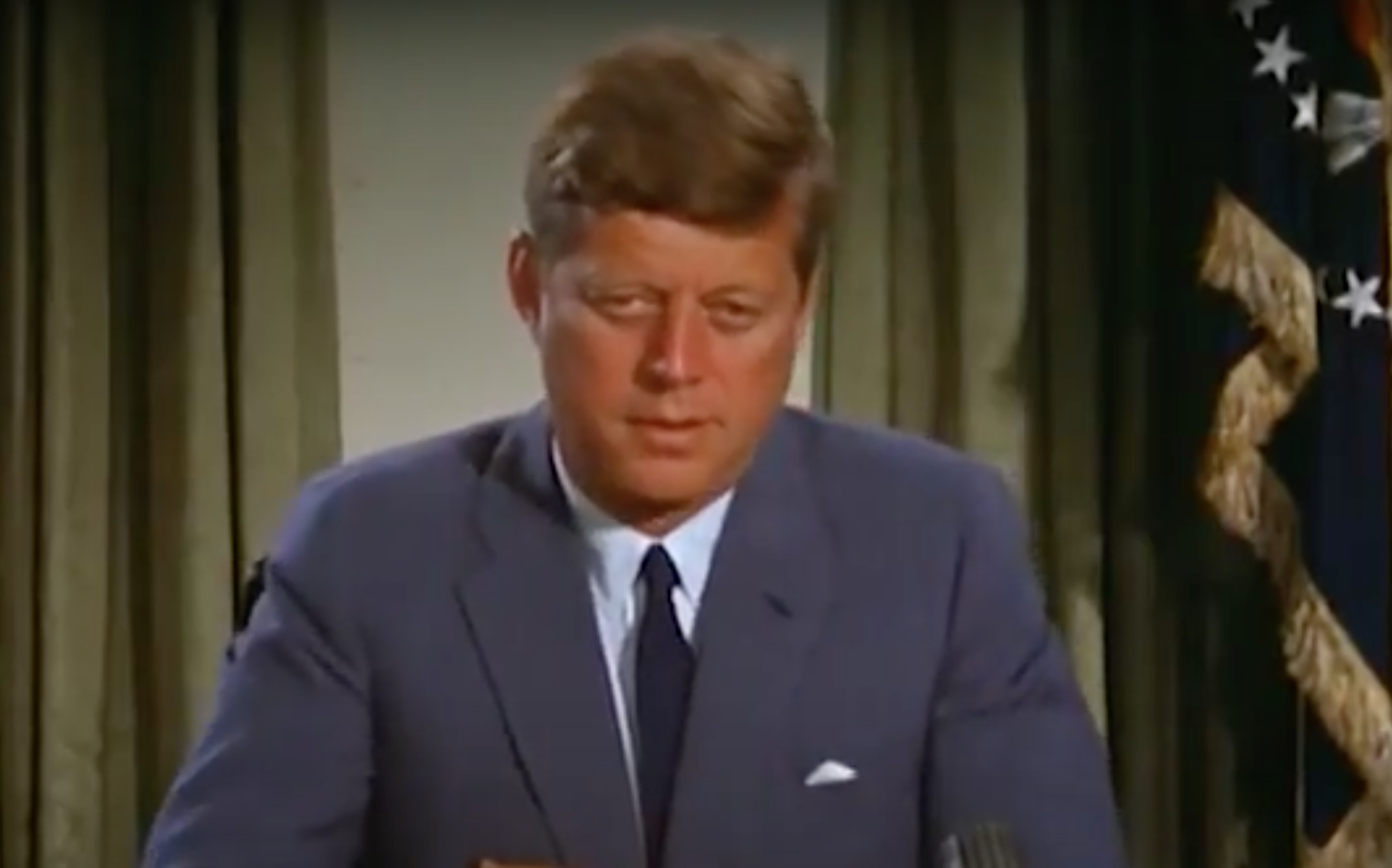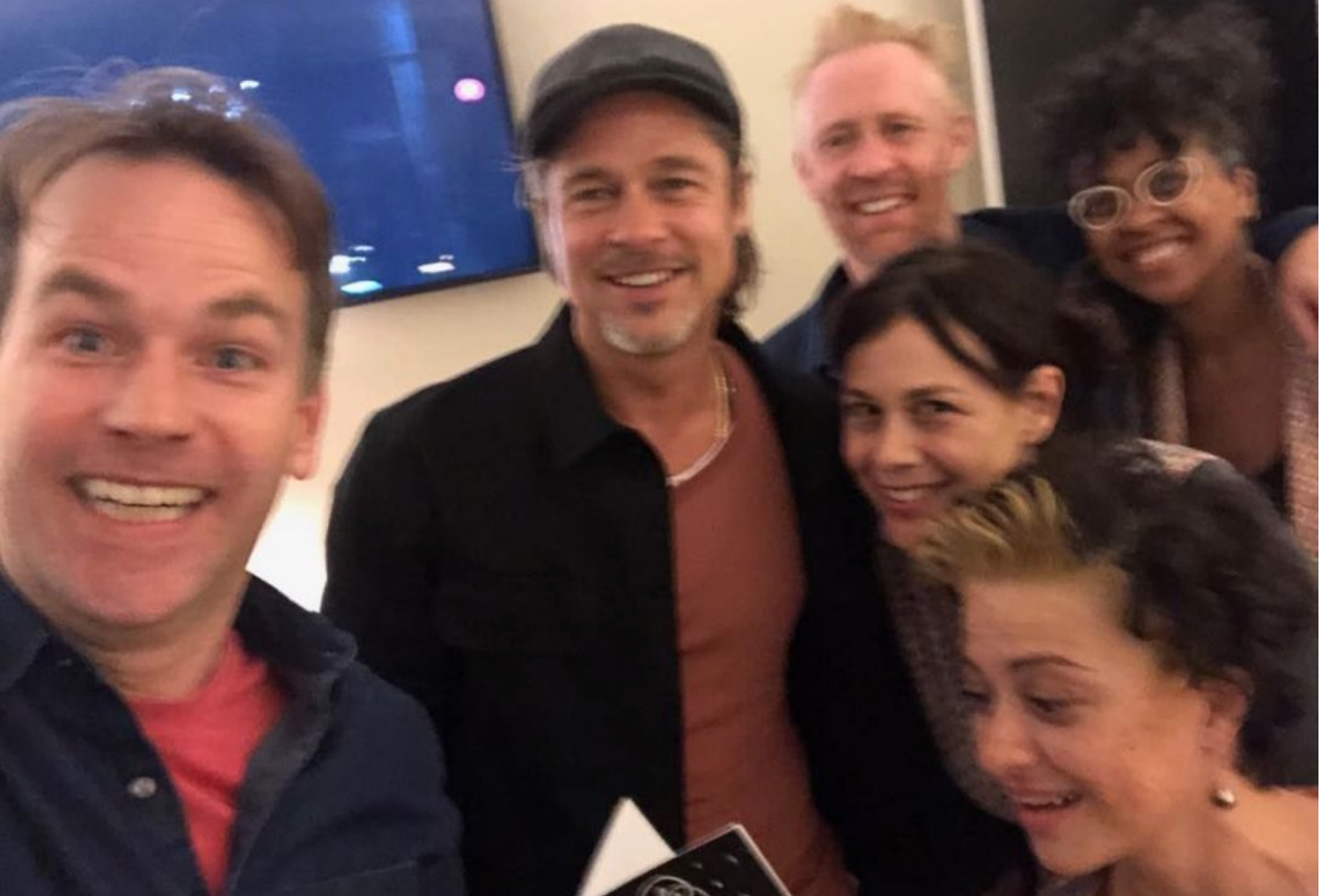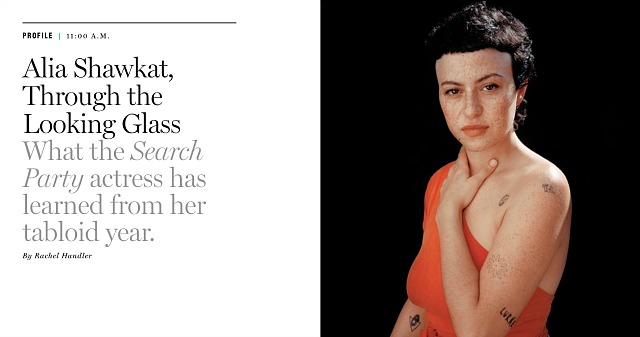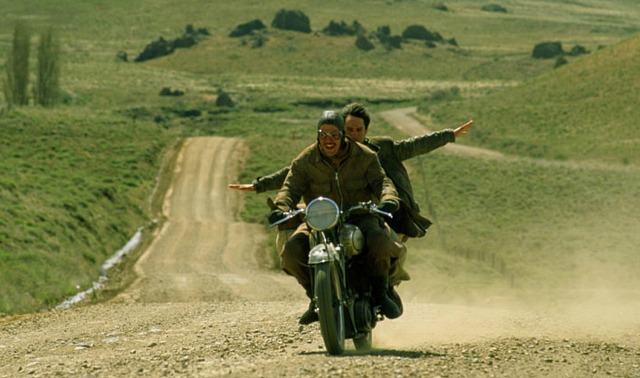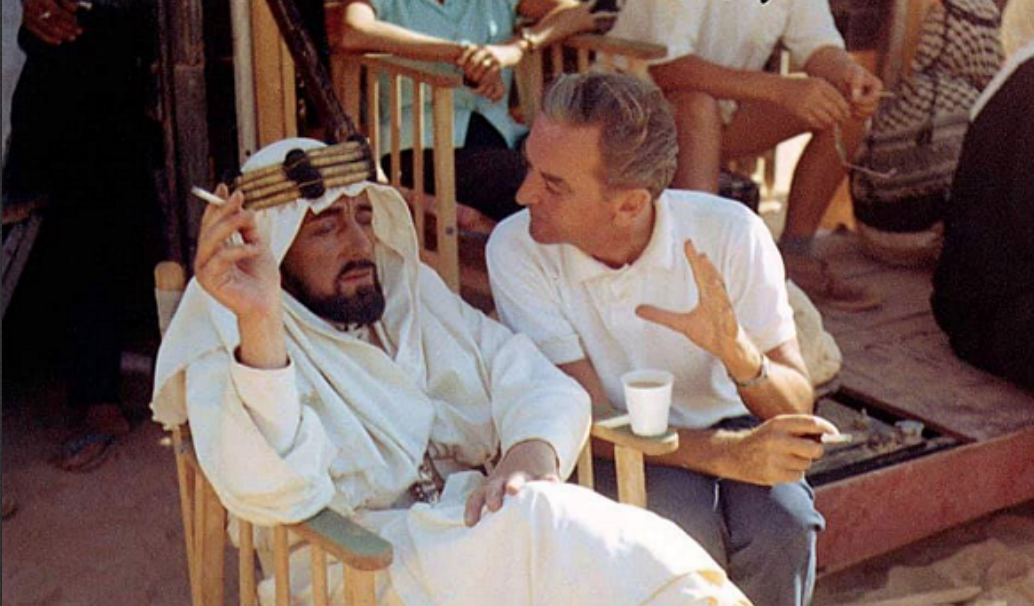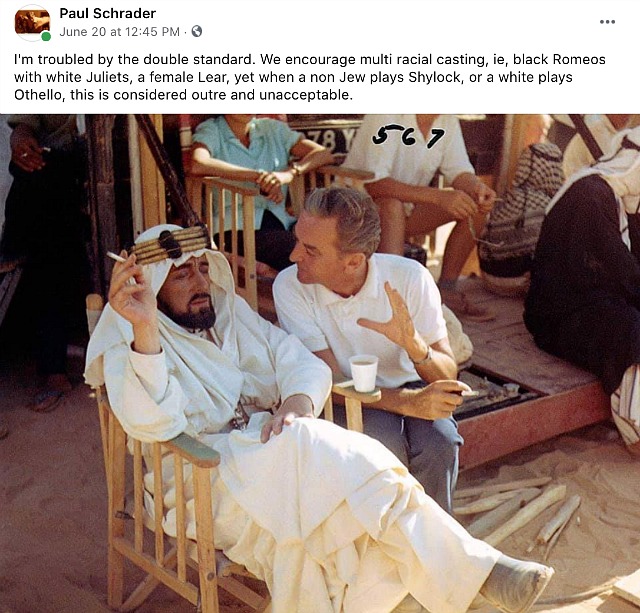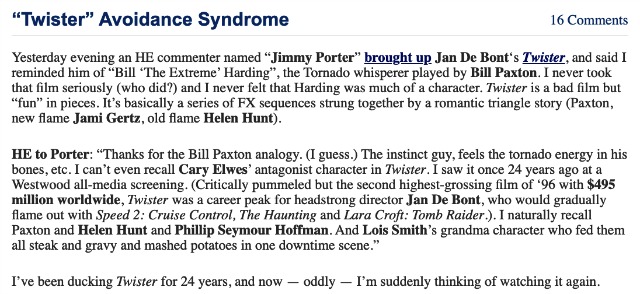One of the most interesting insights into John F. Kennedy‘s insatiable sexual appetite was conveyed by historian Margaret Coit, whom JFK once tried to seduce in the spring of ’53. Coit’s account appeared in Thomas Maier‘s “When Lions Roar: The Churchills and the Kennedys,” and was excerpted in an 11.2.14 Salon piece:
“After meeting in his office, Coit and Kennedy walked through the empty corridors of the Senate Office Building and got into Jack’s open convertible with its faded blue paint and fair share of dents. They drove wildly through the Washington streets until they reached the rooming house where Coit was staying. She invited him in, thinking he might want to rest for a moment.
“Inside, Jack collapsed on the living room sofa, and then tried to drag Coit down beside him. ‘Don’t be so grabby,’ she said, moving away. ‘This is only our first date. We have plenty of time.’
“Kennedy lifted his head and, for a moment, stared at her with his penetrating gray eyes. ‘But I can’t wait,’ Kennedy insisted. “You see, I haven’t any time.’”
A note that Coit later wrote to Kennedy said the following: “I believe you do have the drive to be President — and the dignity, on occasion — and the brains, and these will provide the mømentum. But who knows where the wild horse will run? There is more in luck and fate than we think, and we can do no more than turn it loose.”
JFK’s attitude was explored and elaborated upon in Thurston Clarke‘s “JFK’s Last Hundred Days: The Transformation of a Man and the Emergence of a Great President.” Four passages [the final three are after the jump] are about as good as it gets in this realm:
